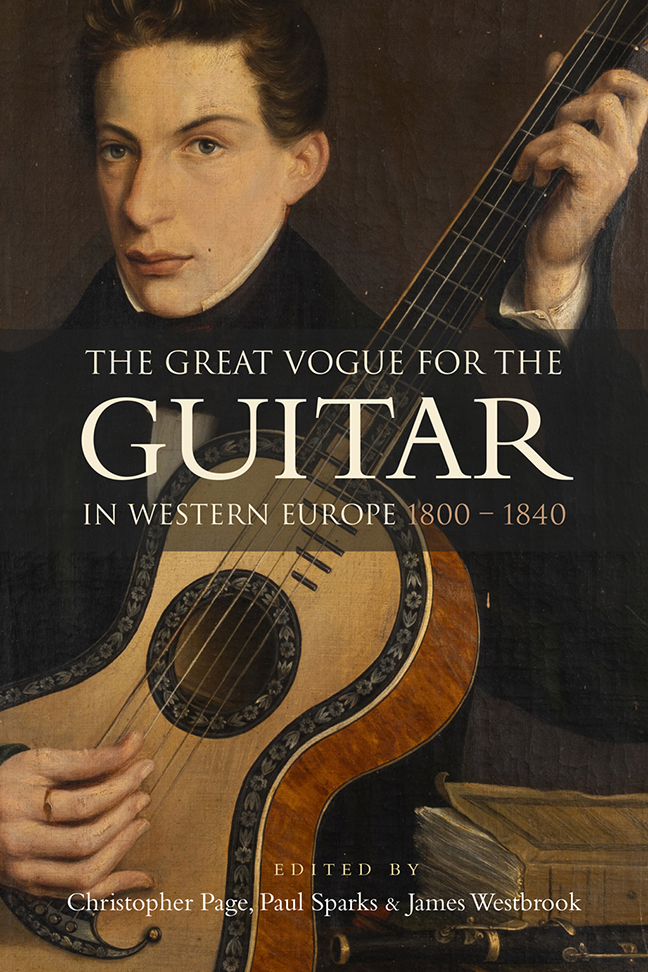Book contents
- Frontmatter
- Dedication
- Contents
- List of Illustrations
- Music examples
- The editors and the contributors
- Foreword
- Acknowledgements
- List of Abbreviations
- Introduction: The Great Vogue for the guitar
- I Contexts
- II The repertoire and its composers
- Appendix: A note on string-making
- Glossary of guitar terms
- Select Bibliography
- Index
12 - Mauro Giuliani (1781–1829)
Published online by Cambridge University Press: 10 January 2024
- Frontmatter
- Dedication
- Contents
- List of Illustrations
- Music examples
- The editors and the contributors
- Foreword
- Acknowledgements
- List of Abbreviations
- Introduction: The Great Vogue for the guitar
- I Contexts
- II The repertoire and its composers
- Appendix: A note on string-making
- Glossary of guitar terms
- Select Bibliography
- Index
Summary
Then [late in 1806] Herr Mauro Giuliani, a Neapolitan, came to us – a man who had been led early in the right direction through a correct sense of harmony, and who, as an accomplished virtuoso, combined with the most correct performance the greatest perfection of technique and of taste.
Looking back from the year 1812, the Viennese musician Simon Molitor had no doubt about the significance of Mauro Giuliani's arrival in Vienna in 1806. Giuliani came with a technique and a gift for composition, backed by a thorough musical training, and Molitor admired the correctness of his harmonic sense as much as the great virtuosity of his playing. Giuliani's journey to Vienna now seems the most important single event that the long-term diaspora of Italian musical talent in the eighteenth and nineteenth centuries contributed to the Great Vogue for the guitar, or even to the guitar's history at any time. For although Giuliani did not singlehandedly create the fashion for his instrument in Vienna, he won, by his virtuosity and the quality of his compositions, a degree of acceptance and admiration among lovers of orchestral and chamber music that many guitarists have since envied, but few have enjoyed. Within less than a year of his arrival in Vienna, as we shall see, a publisher of his music could already claim that a new era for the guitar was beginning.
Early years in Italy and the move to Vienna
With its wide prospects of the Adriatic, the port city of Bisceglie in Apulia seems an appropriate birthplace for a musician whose career began with his working his way up the coast of that great maritime corridor to Trieste then pushing onwards to Vienna. Mauro Giuliani was born at Bisceglie on 27 July 1781 and was raised in the little town of Barletta, a commune of Apulia. From 1791, he and his brother Nicola received guitar lessons there from Gaetano Lucci, their brother-in-law. Lucci was a Neapolitan, so through him the Giuliani brothers came into contact with the guitar scene of Naples, where Federico Moretti and Ferdinando Carulli were already active. In 1800, young Mauro married Maria Giuseppa del Monaco; their sons, Michele and Gaetano, were born in 1801 and 1803. Three years later, Giuliani gave a concert in the port city of Trieste, far to the north of his native town.
- Type
- Chapter
- Information
- The Great Vogue for the Guitar in Western Europe1800-1840, pp. 187 - 202Publisher: Boydell & BrewerPrint publication year: 2023

